Opinion pieces, columns and news reports in India are rife with the belief that the Sabang Port in East Sumatra, Indonesia, will be developed by India for strategic purposes. Many scholars and analysts have vehemently argued that Sabang would serve as a counter to Hambantota, a deep sea port built by China in Sri Lanka, and this would help India challenge China’s aggressive march into the Indian Ocean.
While that may be quite plausible, it is useful to keep in mind that sea ports and the associated infrastructure serve many purposes besides commercial and strategic. In fact, maritime infrastructure is inherently flexible in nature, and offers a wide spectrum of opportunities for policy makers to pursue political, diplomatic, strategic, economic, technological, cultural, environmental, ecological and developmental engagements.
Last month, during Prime Minister Modi’s visit to Jakarta, India and Indonesia issued a joint statement which ‘underlined the importance of stronger connectivity, particularly on sea links, in order to facilitate economic cooperation and people-to-people contact’, and “welcomed the plan to build connectivity between Andaman Nicobar-Aceh to unleash the economic potentials of both areas.” Further, they appreciated the “decision to set up a Joint Task Force to undertake projects for port related infrastructure in and around Sabang.” The joint statement also made reference to adoption of the “Shared Vision on Maritime Cooperation in the Indo-Pacific between India and Indonesia” which would act as a catalyst to develop “further cooperation in maritime sector which can be a force of immense stability in the region.”
The above documents and declarations are significant and substantive to develop Sabang into a maritime hub that can contribute to the Blue Economy and development of the Aceh region and the Andaman & Nicobar Islands. This can be achieved in at least six thematic areas that are closely connected with each other and are embedded in India’s Act East Policy and Indonesia’s Global Maritime Fulcrum.
Maritime Connectivity
First is short sea shipping; Sabang, on the island of Whe, is located approximately 20 kilometers north of the capital of Banda Aceh. It is a small port and can receive ships of up to 50,000 DWT alongside a 180 meters long deep water berth; but all cargo has to be unloaded using ships’ cranes. From commercial point of view, the port is planned to be developed into a hub port so that goods can be transshipped to other close by port by using appropriate vessels.
It is fair to label Sabang as a Bay of Bengal port; geographically, it is at the bottom of the open end of the ‘horse shoe’ shaped Bay of Bengal. Further, it is mid-way between Colombo and Singapore, the major transshipment hubs in South Asia and Southeast Asia that are connected by an international sea lane which cuts across the Indian Ocean. Port Kelang and Tanjung Pelepas are major transshipment hubs, and Sabang is unlikely to offer any competition to these modern and highly developed ports.
'
Instead, Sabang is appropriate to support short sea shipping in the Bay of Bengal on at least two counts. First, it can be connected to Chennai which in recent times has emerged as an important transshipment hub and can handle fifth generation (5000-8000 TEUs) container vessels, and where a number of shipping lines make direct calls. In 2017, a direct container shipping service from Chennai to the US east coast was launched which would result in 10 days voyage savings. Second, Sabang can be connected with other Bay of Bengal ports such as Kolkata, Chittagong and Yangon for container shipping, and Haldia, Chittagong, Dawei, Kyaukpyu for liquid bulk (crude oil and petroleum products) and dry bulk (coal, iron ore, grains, bauxite, fertilizer).
Blue Economy
Second is Blue Economy. This issue has resonated both in India and Indonesia and the respective leadership have endorsed and embedded the idea into their national plans. For instance, Prime Minister Narendra Modi has on a number of occasions at the national and international levels promoted the idea. He likened the “blue Chakra, the wheel in the national flag to represent the potential of the Blue Economy and endorsed it as a new pillar of economic activity in the coastal areas which can be to the linked hinterland. Prime Minister Modi has also announced his vision for the seas through Security and Growth for All in the Region (SAGAR).
Similarly, President Joko Widodo has embedded Blue Economy in his vison of Global Maritime Fulcrum (GMF) which
aims to harness country’s marine potential in a sustainable manner. The Indonesian Government announced a formal and authoritative regulatory umbrella for the National Sea Policy through a Presidential Regulation No. 16/2017 which includes GMF vision and President Widodo’s maritime aspiration. In essence, there are 24 policy priorities and dozens of programmes across five main clusters: i.e. (a) maritime boundaries, maritime space and maritime diplomacy; (b) maritime industries and connectivity; (c) natural resources industry and maritime service, as well as management of marine environment; (d) maritime defence and security, and (e) nautical culture.
There are a number of convergences between India and Indonesia about their vison of harnessing the oceans and this can be achieved through joint projects in Sabang covering a number of issues such as shipbuilding ship repair, fisheries, environment, ecology, to name a few.
Marine Leisure Industry
Third is about promoting marine leisure industry through tourism, cultural exchanges and people-to people contacts which finds specific mention in the joint statement and vison document and can be developed by adopting ‘memorandums of understandings’. As far as tourism is concerned, sustainable and community-based tourism can be planned by establishing cruise connectivity between Sabang Island and Havelock Island through Port Blair. This has the potential to contribute to the growth of cruise shipping, marine leisure industry including sports, diving and wellness tourism. It is a fact that cruise tourism in the Bay of Bengal is quite weak and major cruise liners call at Langkawi in Malaysia, and Phuket in Thailand, which already enjoy popularity among international tourists.
Digital-Cyber Maritime Connectivity
Fourth is about digital connectivity. Nearly 90 per cent of global trade by volume is carried over the seas and in modern times, ports, ships and the associated supply chains are highly digitized. Growing digitalisation, and the ever-expanding use of electronic data, has transformed the way modern ports operate. The consolidated physical and cyber dimensions, referred to as Cyber-Physical System (CPS) connects the physical world with the virtual world of information processing through software systems, communications technology, and sensors/actuators including embedded technologies. Digital Connectivity between Sabang and Port Blair with other Bay of Bengal ports can be a catalyst for augmenting maritime infrastructure, economic development and efficient commerce.
Maritime Skill Development
Fifth issue concerns the critical demand for a technically skilled workforce which should be able to understand maritime infrastructure, its unique characteristic, apply innovative technologies in marine science and engineering, and fill the skills gap. This would require tailor-made programs focused on capacity building and bridging knowledge gaps which help national objectives. This can be achieved through partnerships among maritime education and scientific institutions and serve as capacity building in domains such as fishing industry, marine living resources management through technical cooperation, exchange of experts, provision of equipment and financial assistance, etc. These will trigger innovation and entrepreneurship and act as a catalyst for SMEs, entrepreneurs and startups which would potentially turn into job creation.
Harnessing Disruptive Technologies
Sixth is supporting innovation for maritime infrastructure related disruptive technologies which are transforming modern day maritime operations. Big data, artificial intelligence, augmented/virtual reality, blockchain technology and additive manufacturing commonly known as ‘3D printing’ are mushrooming and driving innovation to augment the maritime domain. For instance, 3D printing technologies support real-life applications in oceanography through hydrodynamics, biomechanics, locomotion and tracking and surface studies. Another significant use of 3D printing is in preparing coral reef replicas and thereafter seeding coral to restore damaged reefs. Similarly, blockchain technology is now expanding into container management systems, and artificial intelligence is supporting autonomous operations in shipbuilding and port operations.
Concluding Thoughts
India and Indonesia are poised for the most optimal partnership and have agreed to work intensively in a number of sectors. There are a number of convergences between India’s Act East Policy and Indonesia’s Global Maritime Fulcrum (GMF) wherein the oceans and seas are central. Further, the “Shared Vision of Indo-Indonesia Maritime Cooperation in the Indo-Pacific” is rich in content and offers enormous opportunities to India and Indonesia to harness the potential of the Blue Economy and the reaffirmation of their commitment to achieve the Sustainable Development Goals (SDGs) is noteworthy.
In the above context, Sabang is a pearl of India-Indonesia maritime partnership and could well be the test of the commitment of both countries to pursue the agenda put out by the respective leadership. It would also be crucial for the realization of the full potential of India ASEAN Maritime Connectivity vision that aims to deliver economic development in the region and deepen economic integration.
(The author is former Director National Maritime Foundation, New Delhi)
(The paper does not necessarily represent the organisational stance. The author certifies that the article/paper is original in content, unpublished and it has not been submitted for publication/web upload elsewhere, and that the facts and figures quoted are duly referenced, as needed, and are believed to be correct).
(The paper does not necessarily represent the organisational stance... More >>
Image Source: https://steemitimages.com/DQmQz9GyFUTK6Z6GgMKsgzqS2yxiWiMYP44hF333ujkotYP/maxresdefault.jpg


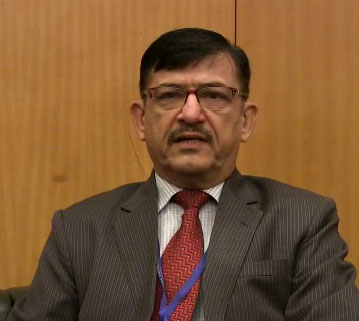
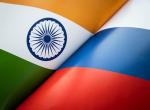
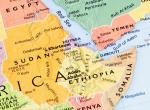
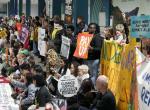
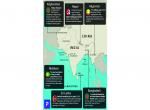
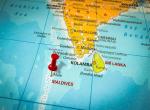

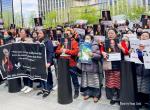

Post new comment